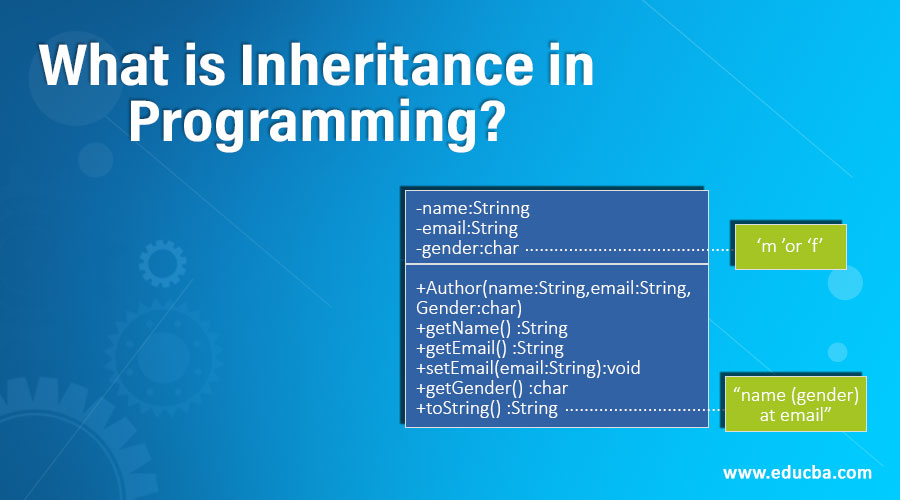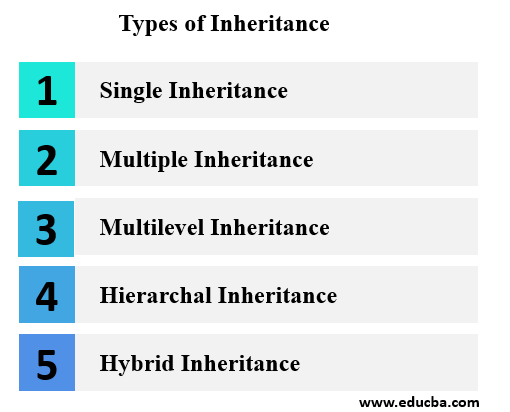
What is Inheritance in Programming?
Inheritance is a word that consists of the word “Inherit”, which means “To Derive”. So, Inheritance is defined as one class’s tendency to derive properties and characteristics from other classes. It provides additional functionalities to extract features from the base class and imply it into other derived classes significantly.
In computer programming, Inheritance is an eminent concept in Object Orient Programming (OOPS) Paradigm. It provides a mechanism for establishing relationships and building hierarchies of class in object composition. Inheritance means the use of code that is pre-written or created previously. And one thing to keep in mind is that we are just using the code and not updating or changing it. The functions and methods defined in one class may be used in manipulating other data members of the class.
Understanding Inheritance
To understand inheritance, we need to focus on two types of classes: Sub Class and Super Class.
Sub Class, also known as Derived Class, it is a class that inherits the property, and Super Class is also known as Base Class; it is a class from which properties are inherited. In some concerns, Sub Class is known as child class, and the superclass is known as parent class. So, till now, it is obvious that the subclass, i.e. child class, inherits properties from the superclass, i.e. parent class.
How Does Inheritance make Working so Easy?
In object-oriented programming, whenever a class is created, data members and data functions are designated. Data members are those variables that are declared in the same class. Data functions are methods or functions that are defined in the class. These functions are generally used for manipulating data members. These data functions and data members may be public or private, depending upon the scope of use.
So, with the help of inheritance, we need not create and define data members and functions recursively. We code once in a class, and they can inherit all properties of data members and functions in the subsequent subclass. This feature also helps in effective dynamic programming.
Types of Inheritance:
- Single Inheritance: One derived class inherits from one base class.
- Multiple Inheritance: One derived class inherits from many base classes.
- Multilevel Inheritance: One derived class inherits from other derived classes.
- Hierarchal Inheritance: More than one derived classes inherit from one base class.
- Hybrid Inheritance: A combination of more than one type of inheritance.
What Can You Do with Inheritance?
If a team is working on a big program or piece of code, then inheritance acts like a blessing. We need not write code repeatedly; if there is a hierarchy in classes or classes that have a dependency on one another, we can use inherit code from base class to child class. This will prevent from the writing of the same code repeatedly. Inheritance also plays an important role in dynamic programming. One code can be utilized in many fields, and hence complexity can be reduced. If someone makes changes in one subclass, it will not affect the superclass or other classes.
Advantages of Inheritance
Below are listed a few pros of inheritance:
- Frequent use of code written once, i.e. code reusability.
- One superclass can be used for the number of subclasses in a hierarchy.
- No changes to be done in all base classes; just do changes in parent class only.
- Inheritance is used to generate more dominant objects.
- Inheritance avoids duplicity and data redundancy.
- Inheritance is used to avoid space complexity and time complexity.
Why is Inheritance Important in Programming?
Inheritance is important in programming due to code reusability. We can avoid duplicate data and redundancy from our program. Let’s take an example: if you live with your parents, then the father will be one base class, and you (as a child) will be the derived class. So we can inherit many things such as last name, address line, city, and state from the parent class. Also, if we want to update the address or anything, we will just change the base class’s address, and all the derived classes will inherit the property from that base class.
Why Should we Use Inheritance?
Primarily we use inheritance to use specific portions of code and modify certain features according to our need, and this can be done without any complexity. Inheritance provides flexibility in our code to reuse it from base class to required derived class. A child class can override the base class’s properties without rewriting code in the same class again and again.
Why Do We Need Inheritance?
- To reuse code, write code and apply it further, wherever necessary.
- To avoid duplicity and data redundancy in the program.
- To reduce space and time complexity.
- Easier in hierarchal programming paradigm.
- Variables of the same name can be used multiple times in the scope of the code.
- To create dominant data objects and functions.
Who is the Right Audience to Learn Inheritance technologies?
- Computer Science undergraduates.
- Programming students.
- Mid-level programmer.
- Information Technology graduates.
- Electronics graduates.
- The technical person who is doing or willing to work on hierarchal programming.
How will this technology help you in career growth?
As per discussion, it is clear that Inheritance technology is an influential part of object-oriented programming, so anyone who desires to do better object-oriented programming should have expertise in inheritance technology. Also, if a person has immense knowledge of inheritance technology, one can provide stability in the company’s code development sector and can achieve appreciation or a good position in a team. This also helps an organization to make greater revenue, and also it can perform well.
Conclusion: Inheritance in Programming
Inheritance is a virtue in object-oriented programming. A user can reuse its code once written and can save space and memory of code. The time effort of developers can also be reduced with inheritance, and it provides a better understanding of code to other developers as well, working in a team. With the help of inheritance, a superclass’s properties can be inherited in subclasses and can make coding effortless.
Recommended Articles
This has been a guide to What is Inheritance in Programming? Here we discussed the definition, understanding, types, advantages, the importance of inheritance in programming, and the use of inheritance. You can also go through our other suggested articles to learn more –


